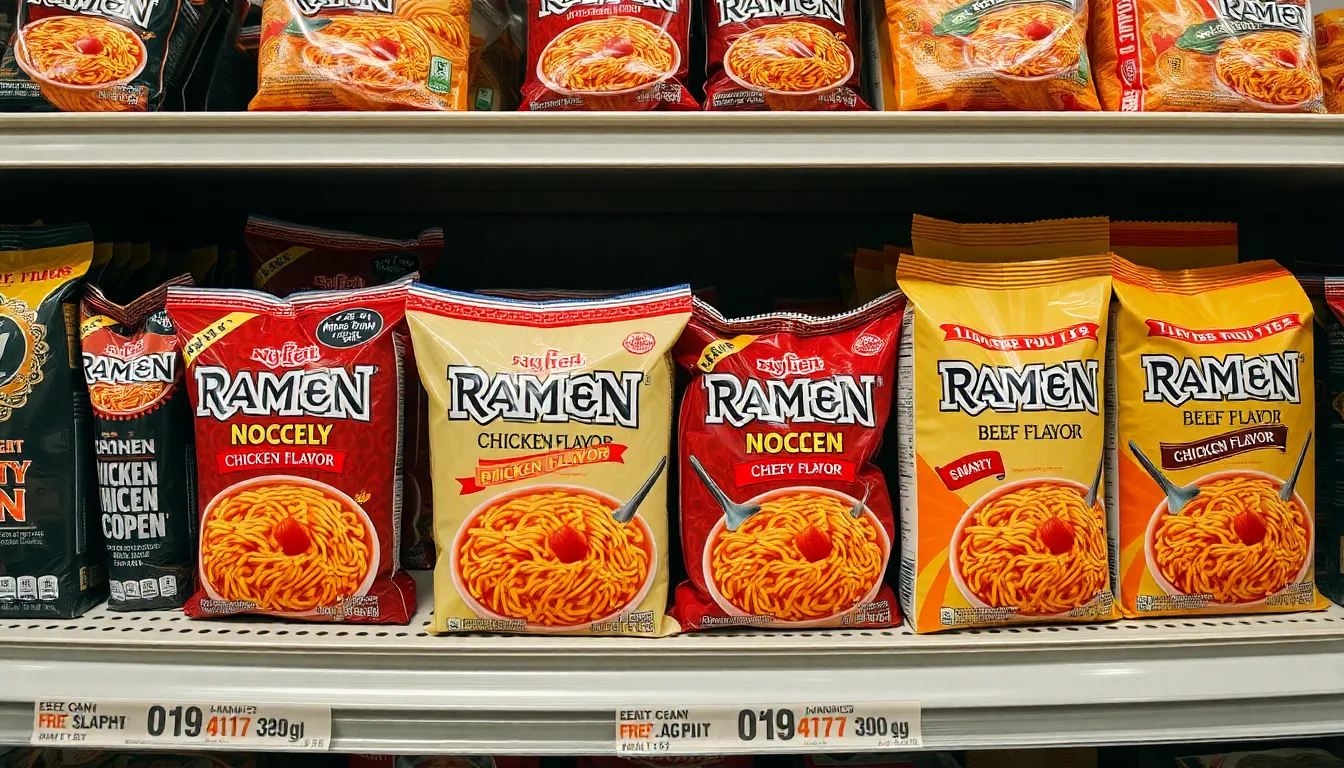Table of Contents
ToggleRamen noodles have long been the beloved comfort food for college students and busy professionals alike. With their quick prep time and satisfying slurp, it’s hard to imagine life without them. But what if a sudden recall threatens this cherished staple? Panic might set in faster than boiling water on the stove.
Overview of Ramen Noodles
Ramen noodles are a widely loved comfort food, favored for their convenience and rich flavors. Their accessibility makes them a staple in many households, especially among college students and busy professionals.
Popularity and Varieties
Ramen noodles enjoy immense popularity globally, thanks to their diverse varieties and easy preparation. Instant ramen provides quick meals, available in countless flavors, such as chicken, beef, shrimp, and vegetarian options. Many restaurants offer fresh ramen, featuring unique broth styles like tonkotsu or shoyu, appealing to culinary enthusiasts. Additionally, regional specialties like spicy Korean ramyeon or Japanese ramen highlight the versatility of these noodles. Each variety attracts a different audience, expanding ramen’s reach beyond traditional consumers.
Common Ingredients
Common ingredients in ramen noodles contribute to their distinct taste and texture. Wheat flour serves as the base for the noodles, while water and salt enhance flavor. Alkaline mineral water often provides a chewy consistency, distinguishing ramen from other noodle types. Broth ingredients vary widely, typically including soy sauce, miso, or bone broth, enriching the meal’s flavor profile. Toppings, such as green onions, soft-boiled eggs, seaweed, and sliced pork, customize each bowl and reflect personal preferences. Together, these components establish the unique appeal of ramen.
Recent Recall Information

Recent reports indicate that certain ramen noodle products might be subject to recall. This situation raises concerns about safety and quality, prompting investigators to evaluate the circumstances.
Reasons for the Recall
Manufacturers typically initiate recalls due to food safety violations, contamination concerns, or undeclared allergens. In this case, tests revealed elevated levels of hazardous substances, raising red flags for health officials. Potential contamination during production contributed to the decision. Consumer safety remains a priority, ensuring that products do not pose risks to public health.
Affected Brands and Products
Several brands associated with the recall include popular names in the ramen market. Notable examples consist of Ramen Noodle Co. and Instant Ramen Foods. Specific products under scrutiny are Chicken Flavor Ramen, Beef Flavor Ramen, and a few specialty items. Consumers should check labels and product codes, as these recalls may affect a range of packaging sizes. Awareness of these recalled items can help ensure safe consumption.
Impact of the Recall
Consumers face uncertainty following the recall of certain ramen noodle products. Panic among fans of ramen could escalate, particularly regarding their favorite meals and snacks.
Consumer Concerns
Consumers express significant worries about potential health risks from recalled ramen noodles. Many individuals mention the convenience and affordability they associate with ramen, resulting in hesitation about changing their purchasing habits. Label checks become crucial as people seek to ensure their ramen choices are safe, especially with popular varieties affected by the recall. Visibility on social media amplifies these concerns, prompting discussions about food safety and responsible consumption. Individuals report feeling uneasy about the implications of recalled items, leading some to reconsider their loyalty to certain brands.
Health Implications
Health implications from consuming contaminated ramen noodles pose serious risks. Elevated levels of hazardous substances have emerged as a primary concern for public health officials. Adverse effects range from mild gastrointestinal discomfort to more serious and long-lasting health issues. Testing identifies specific toxins, highlighting the importance of avoiding affected products. Health experts recommend monitoring updates from food safety authorities regarding the recall’s scope. Maintaining awareness ensures consumers can protect themselves and their families from potential health hazards associated with recalled items.
How to Check for Recalls
Staying informed about food recalls, including ramen noodles, is crucial for consumer safety. Various resources and straightforward steps can help individuals ensure their products are safe.
Resources and Websites
Trusted resources provide up-to-date recall information. The Food and Drug Administration site lists recalls for food products, including ramen noodles. Additionally, the USDA offers insights on meat and poultry recalls. Websites like the Consumer Product Safety Commission also cover food safety alerts. Following specific brands on social media can inform consumers about their products. Utilizing these platforms helps individuals stay informed quickly and efficiently.
Steps to Verify Product Safety
To verify product safety, begin by checking product labels for recall notifications. Look for package dates and lot numbers that relate to recall announcements. Visit official websites for detailed information on affected products. Calling the customer service lines of manufacturers provides additional clarity on specific items. Reporting any concerns about ramen noodle products to health officials also enhances consumer safety. Thoroughly documenting product details aids in identifying recalls effectively.
The recent potential recall of certain ramen noodle products has stirred concern among consumers. As beloved as ramen is for its convenience and flavor, safety must always come first. Staying informed about which products are affected can help individuals make safe choices for themselves and their families.
Being proactive by checking labels and utilizing resources from health authorities ensures that ramen enthusiasts can continue enjoying their favorite meals without worry. As the situation develops it’s crucial to remain vigilant and prioritize health over convenience.







